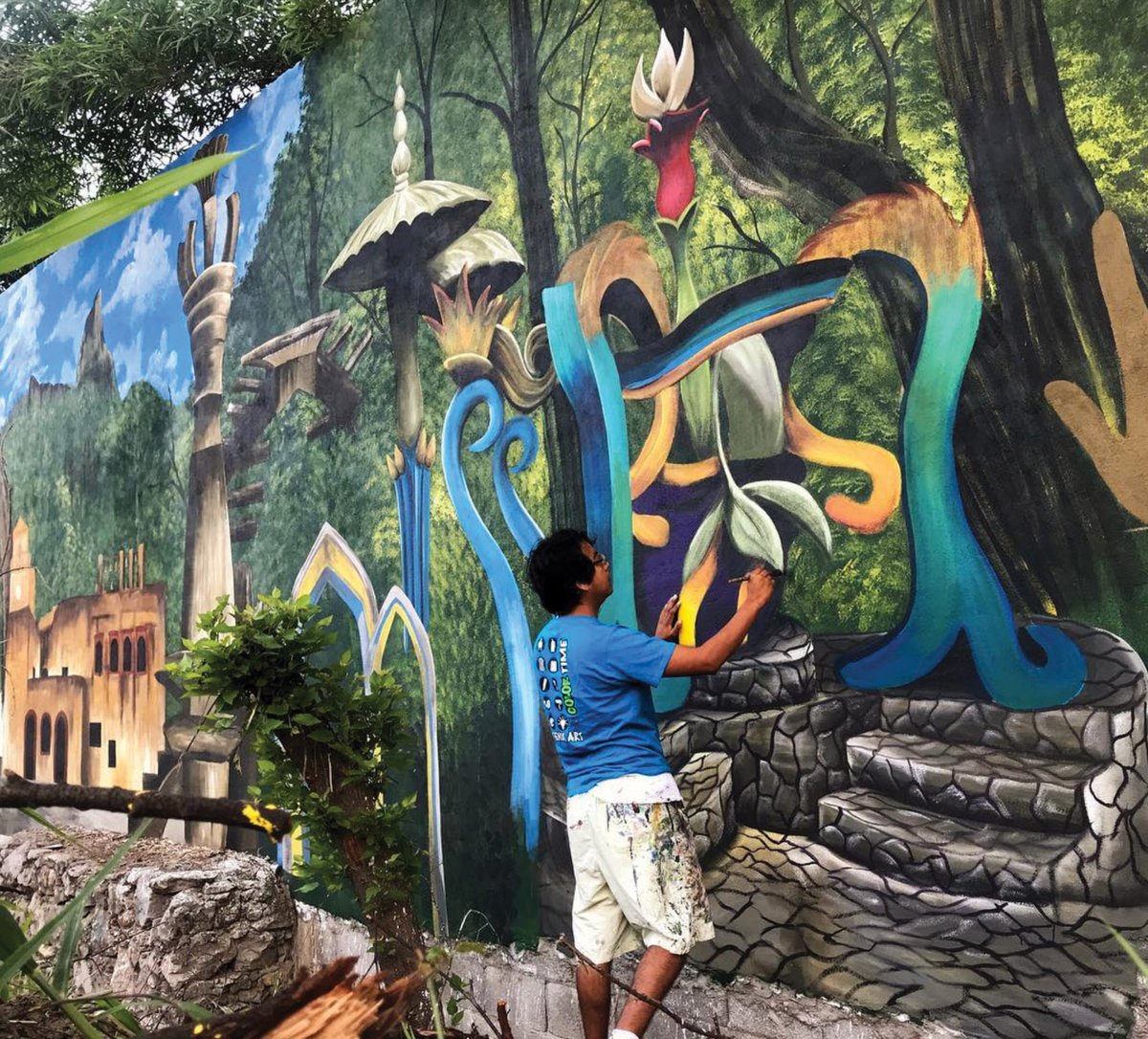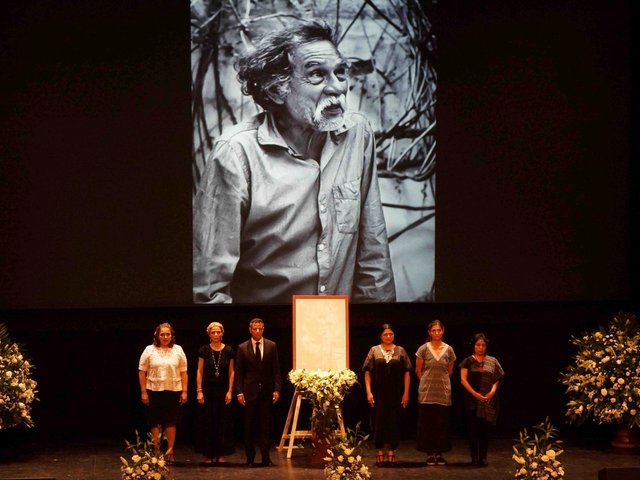Artists from across the Americas gathered in Mexico last week to celebrate the life of Héctor Domínguez, a 27-year-old muralist and environmental activist who was shot dead in his home in Ciudad Valles in the northern state of San Luis Potosí. Although the motive behind the killings remains unclear, investigators say armed men burst into Domínguez’s home one evening and shot the artist as well as his father, Aureliano, and brother, Julio Emmanuel. Four arrest warrants were issued in the days after the deaths and police have taken two people into custody, although the weapon used in the shooting has not been recovered.
Domínguez described himself as an “artist, muralist and Lego builder” and his slogan “the world needs more love and more colour” often appeared in his street art. His vibrant large-scale works often feature indigenous Mexicans, who are rarely represented in public art, or local flora and fauna. He used his work to put a spotlight on environmental destruction in Mexico, which has seen watercourses polluted and thousands of acres of forests lost due to logging and farming in recent decades. As a result, several endemic species have been reduced to such low numbers that conservationists think they will be driven to extinction.
In Mexico, clashes over land use and exploitation are common, and many crimes related to such issues remain unsolved for years. The lead investigator in Domínguez’s murder told journalists that the involvement of organised crime has been ruled out due to forensic details that he did not specify. Police have named the two men arrested after the shooting as Christian N and Luis Armando N. They have not confirmed if the suspects are related to each other, but some Mexican media reports claim Christian N is a relative of a powerful local landowner and farmer.
His slogan was “the world needs more love and more colour”
In the days immediately after the attack, family members revealed that, at the time of his death, Domínguez was the subject of a protection order following an unsuccessful attempt on his life last September. As he left the school where he taught art one afternoon, Héctor Domínguez was fired on and a bullet lodged in his abdomen. After the failed hit, one of his murals was vandalised with black paint and he decided to stop painting murals for a short time. The artist resumed his work soon after, but was reportedly uncomfortable with the idea of living with round-the-clock guards provided by the San Luis Potosí state government and was said to be carrying a panic button instead.
The Mexican artist Pablo Delgado, who works in London and Mexico City, tells The Art Newspaper the killing was “a senseless crime like so many we are seeing in Mexico at the moment”.
“It is too early to say why this has happened,” he says. “It could have been over something as pointless as a revenge because he painted on a wall that someone else had their eye on, or it could have been something to do with his environmental activism.”
The critic and academic John Slyce, who teaches at the Royal College of Art in London, is also concerned about the attack and what it means for freedom of expression in a country where artists and journalists are increasingly self-censoring their work. “The painting of murals in Mexico is hugely political. Free speech is clearly dangerous to gangsters and to the State,” he says. “Given the social violence in Mexico—which is part of a broader violence across the region—there could be a very specific context for this killing. It is about the silencing of a voice, something which is increasingly happening across the globe.”
Even though his career was taking off, Domínguez continued teaching art at a local high school and co-founded a collective, Fénix Art, which gave young people the opportunity to work on large-scale art projects. His most recent work, a mural at a local school, was due to be unveiled this month. Instead, his friends and family have asked people to leave candles in front of every mural he painted.




